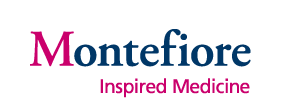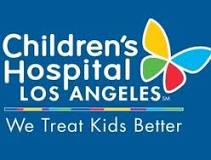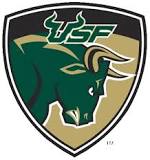A Novel Method to Determine HIV Incidence Among Youth
| Status: | Completed |
|---|---|
| Conditions: | HIV / AIDS |
| Therapuetic Areas: | Immunology / Infectious Diseases |
| Healthy: | No |
| Age Range: | 12 - 24 |
| Updated: | 4/21/2016 |
| Start Date: | February 2003 |
| End Date: | March 2007 |
Identifying young people with early HIV-1 infection is important for increasing linkage to
care, for behavioral counseling, and for enrolling individuals into programs that can
provide effective interventions to disease progression and improve outcome. This study will
develop and evaluate a saliva-based sensitive/less sensitive (S/LS) assay for
differentiating persons with recent HIV-1 infection (less than 133 days) from those with
established HIV-1 infection.
care, for behavioral counseling, and for enrolling individuals into programs that can
provide effective interventions to disease progression and improve outcome. This study will
develop and evaluate a saliva-based sensitive/less sensitive (S/LS) assay for
differentiating persons with recent HIV-1 infection (less than 133 days) from those with
established HIV-1 infection.
HIV infection incidence estimates are important, not only for determining specific
populations where community HIV education sessions can have the most benefit or where
changes in infection patterns are occurring, but also to target these populations for
therapeutic interventions and measure their effect in the community. It is estimated that
half of all new HIV infections in the United States occur in persons under the age of 25
each year, translating to approximately 20,000 new HIV-infected young people annually.
Incidence can be estimated by testing a cohort of individuals for antibody at two different
time periods and observing the number of new infections, or by demonstrating the presence of
HIV p24 or viral RNA in antibody-negative persons. Since these strategies are logistically
difficult, expensive, and/or require significant laboratory infrastructure, new
laboratory-based strategies were devised that can classify individuals as recently infected
or with established infection. These serologic assays are known as "sensitive/less sensitive
(S/LS) assays". They are based on either the concept of antibody titer or the concept of
antibody avidity. There are several S/LS tests available but all of them are performed on
serum collected via venipuncture. Based on several studies showing that obtaining saliva is
a more desirable method of collection for adolescents receiving HIV testing, it is
anticipated that the collection of saliva and its use for determining HIV incidence by S/LS
methods among adolescents would be a valuable adjunct for population studies and for
increasing compliance for testing and enrollment.
The aim of this study is to prove equivalence between the serum S/LS reference method (CDC
validated serum S/LS Dilutional Vironostika (DV) from Organon Teknika) and the experimental
method that uses an FDA approved saliva collection device (OraSure Technologies). Our
rationale follows a syllogism, i.e., if the serum S/LS EIA (DV) is the best serologic method
to determine incidence estimates and a saliva S/LS method is found to perform equivalently,
then it follows that the saliva S/LS method can be used effectively to determine incidence.
Therefore, our purpose is to show equivalence between the two assays. To address the issue
of accuracy, further studies are planned to assess the saliva S/LS test against
seroconversion panels where the exact time of acquisition of HIV infection is known.
This is a cross-sectional, laboratory-based study designed to develop and evaluate a
saliva-based S/LS assay for differentiating individuals with recent HIV infection (less than
133 days) from those with established HIV infection. A total of 440 subjects will be
recruited in the study. A serum and two saliva samples will be obtained from every subject.
The first 40 patient samples will be used to develop and calibrate the saliva-based S/LS
method. The remaining patient samples will be tested using the calibrated saliva based S/LS
assay and the reference serum S/LS assay and concordance between the two methods will be
analyzed.
populations where community HIV education sessions can have the most benefit or where
changes in infection patterns are occurring, but also to target these populations for
therapeutic interventions and measure their effect in the community. It is estimated that
half of all new HIV infections in the United States occur in persons under the age of 25
each year, translating to approximately 20,000 new HIV-infected young people annually.
Incidence can be estimated by testing a cohort of individuals for antibody at two different
time periods and observing the number of new infections, or by demonstrating the presence of
HIV p24 or viral RNA in antibody-negative persons. Since these strategies are logistically
difficult, expensive, and/or require significant laboratory infrastructure, new
laboratory-based strategies were devised that can classify individuals as recently infected
or with established infection. These serologic assays are known as "sensitive/less sensitive
(S/LS) assays". They are based on either the concept of antibody titer or the concept of
antibody avidity. There are several S/LS tests available but all of them are performed on
serum collected via venipuncture. Based on several studies showing that obtaining saliva is
a more desirable method of collection for adolescents receiving HIV testing, it is
anticipated that the collection of saliva and its use for determining HIV incidence by S/LS
methods among adolescents would be a valuable adjunct for population studies and for
increasing compliance for testing and enrollment.
The aim of this study is to prove equivalence between the serum S/LS reference method (CDC
validated serum S/LS Dilutional Vironostika (DV) from Organon Teknika) and the experimental
method that uses an FDA approved saliva collection device (OraSure Technologies). Our
rationale follows a syllogism, i.e., if the serum S/LS EIA (DV) is the best serologic method
to determine incidence estimates and a saliva S/LS method is found to perform equivalently,
then it follows that the saliva S/LS method can be used effectively to determine incidence.
Therefore, our purpose is to show equivalence between the two assays. To address the issue
of accuracy, further studies are planned to assess the saliva S/LS test against
seroconversion panels where the exact time of acquisition of HIV infection is known.
This is a cross-sectional, laboratory-based study designed to develop and evaluate a
saliva-based S/LS assay for differentiating individuals with recent HIV infection (less than
133 days) from those with established HIV infection. A total of 440 subjects will be
recruited in the study. A serum and two saliva samples will be obtained from every subject.
The first 40 patient samples will be used to develop and calibrate the saliva-based S/LS
method. The remaining patient samples will be tested using the calibrated saliva based S/LS
assay and the reference serum S/LS assay and concordance between the two methods will be
analyzed.
Inclusion Criteria:
- Age 12 through 24 years
- HIV infection determined by routine HIV testing strategies
- Ability to give informed consent or assent with parental permission, where required
Exclusion Criteria:
- Visibly distraught or emotionally unstable
- Intoxicated or under the influence of psychoactive agents
- First disclosure of sexual, physical, or emotional abuse
- Clinically presents as acutely ill
We found this trial at
15
sites
University of Miami A private research university with more than 15,000 students from around the...
Click here to add this to my saved trials
Montefiore Medical Center As the academic medical center and University Hospital for Albert Einstein College...
Click here to add this to my saved trials
Click here to add this to my saved trials
Childrens Hospital Los Angeles Children's Hospital Los Angeles is a 501(c)(3) nonprofit hospital for pediatric...
Click here to add this to my saved trials
Children's Hospital of Philadelphia Since its start in 1855 as the nation's first hospital devoted...
Click here to add this to my saved trials
University of South Florida The University of South Florida is a high-impact, global research university...
Click here to add this to my saved trials
Click here to add this to my saved trials
Click here to add this to my saved trials
Click here to add this to my saved trials
Click here to add this to my saved trials
Click here to add this to my saved trials
Click here to add this to my saved trials
Click here to add this to my saved trials
Click here to add this to my saved trials
Click here to add this to my saved trials




